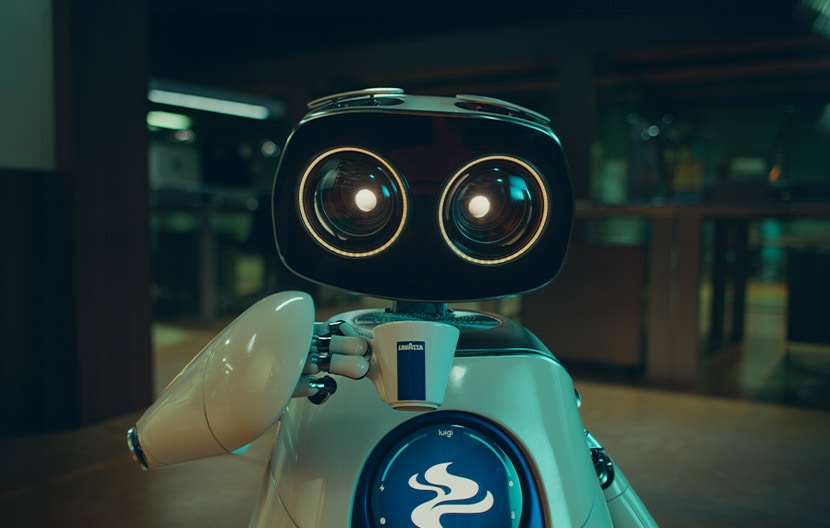Nespresso, Nescafè® and Dolce Gusto® are trademarks of a third party without any link with Luigi Lavazza S.p.A
The 5 best iconic coffee scenes in movies
You may not know it, but some of your favourite movie scenes feature the humble cup of coffee. As one of the most widely-consumed beverages in the world, it’s no surprise that the cup of coffee has served as a staple prop or feature in plenty of movies, acting as a catalyst for conversations, confrontations, and connections on the silver screen. From heated conversations in intense dramas to charming encounters in quirky comedies, coffee has punctuated scenes in movies since the art form began.
Let’s take a look at five of the most iconic coffee moments in film history:
Heat (1995)
Michael Mann's crime saga Heat isn't just a film about heists and high stakes it's also a showcase of intense character dynamics, none more gripping than the coffee shop scene between Robert De Niro's Neil McCauley and Al Pacino's Vincent Hanna. As the two legendary actors square off over steaming cups of coffee, the tension crackles in the air, punctuated by sharp dialogue and probing glances. Mann transforms a simple coffee break into a cinematic showdown, proving that sometimes the most powerful moments unfold over a shared cup of joe.
Pulp Fiction (1994)
Famously, Quentin Tarantino’s 1994 Oscar-winner opens and closes with two scenes taking place in a diner, where plenty of the characters sip on cups of coffee. The first scene offers an introduction to most of the principal characters within a more relaxed setting, whereas the last scene is more frantic, concluding with an attempt at an armed robbery, which hitmen Vincent Vega (John Travolta) and Jules Winnfield (Samuel L. Jackson) have to navigate. Along with these two iconic scenes, Travolta and Jackson also appear in another scene, wearing clothing splattered by blood of their latest victim, drinking cups of what they describe as ‘gourmet coffee’, opposite Tarantino himself. The fast-paced thriller concedes no shortage of memorable moments, though this famous coffee sequence is sure to be one that stands out in the memories of its biggest fans.
Breakfast at Tiffany’s (1961)
Audrey Hepburn's portrayal of Holly Golightly in Breakfast at Tiffany's has contributed to the film’s status as a modern classic, synonymous with elegance and glamour. Arguably the most visually iconic scene in the movie, and the one which corresponds with the film’s title, involves Hepburn, in her chic outfit of cat-eye sunglasses, long gloves, Givenchy dress, pearls and hair swept up elegantly, set to the soundtrack of Moonriver. We see Hepburn enjoying her breakfast of a cup of coffee and a pastry while standing outside the window of Tiffany & Co, admiring the glittering display inside. The juxtaposition of Audrey Hepburn's timeless grace and the bustling energy of New York City creates a captivating tableau that's as enchanting as it is iconic. In Breakfast at Tiffany's, coffee becomes a symbol of quiet contemplation amidst the hustle and bustle of urban life.
Thor (2011)
Marvel's Thor takes audiences on a cosmic adventure filled with gods, monsters, and epic battles, but amidst the grandeur, there's a charming coffee moment that stands out. When the mighty Thor finds himself in a small-town diner, he orders a cup of coffee with a mixture of curiosity and confusion. Chris Hemsworth's portrayal of the Asgardian prince enjoying the mundane earthly pleasures is both charmingly endearing, reminding audiences that even gods need their caffeine fix. In Thor, coffee provides a bridge between worlds, connecting the fantastical with the everyday.
The Goodfellas (1990)
Martin Scorsese's Goodfellas provides a gritty portrayal of life in the mob, but amidst the violence and betrayal, there's a scene that revolves around a simple cup of coffee. As Henry Hill (Ray Liotta) and his associates discuss their latest heist over coffee and cannolis, the camaraderie and tension between them are palpable. Scorsese infuses the scene with his trademark energy and style, transforming a mundane coffee break into a moment of suspense and intrigue.
In conclusion, coffee scenes in movies aren’t merely points of characterisation or plot devices, they’re conduits to displaying human connection, conflict and the universal human experience.





















